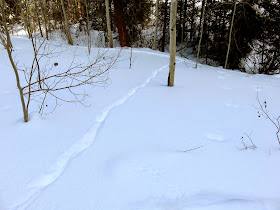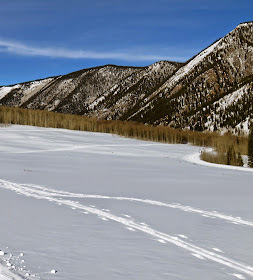Now imagine the delightful surprise of finding a waterfall in the desert. Calf Creek Recreation Area, part of the Grand Staircase Escalante National Monument in south-central Utah, boasts two of these watery wonders. Upper and Lower Calf Creek Falls were formed as tiny Calf Creek cut through Navajo Sandstone on its way from the Boulder Mountains to the Escalante River. While both falls offer a great reward for your effort, the lower falls see swarms of people all lured by easy access from the nearby campground along a well-worn trail. The upper falls, by contrast, is not as easily accessed and thus not as heavily visited.
 |
| Looking across this terrain you'd never guess what lays below. Following this trail to find Upper Calf Creek Falls is like following a treasure map to find hidden jewels. |
 |
| Found it! One of the desert's hidden jewels— Upper Calf Creek Falls. |
 |
| Indian Paintbrush provides a splash of color in the sun-bleached landscape. |
 |
| Several pools above the falls offer places to take a swim, or soak your tired feet. |
It's been several years since we hiked the trail to Upper Calf Creek Falls. As travel to southern Utah has increased exponentially in recent years, I can't guarantee that these falls are as lightly explored. However, hidden wonders that are difficult to access are still less likely to host visitors. For adventure, splendor, and solitude, visit this hidden desert treasure if you're traveling through the Grand Staircase Escalante National Monument. For more information, click on this link: http://www.utah.com/hike/calf-creek-falls,-upper-trail








